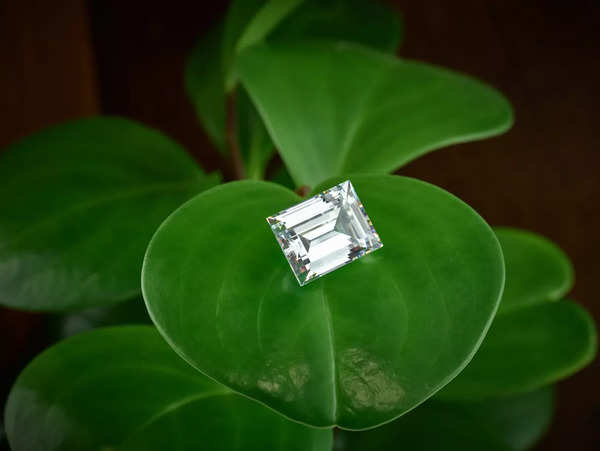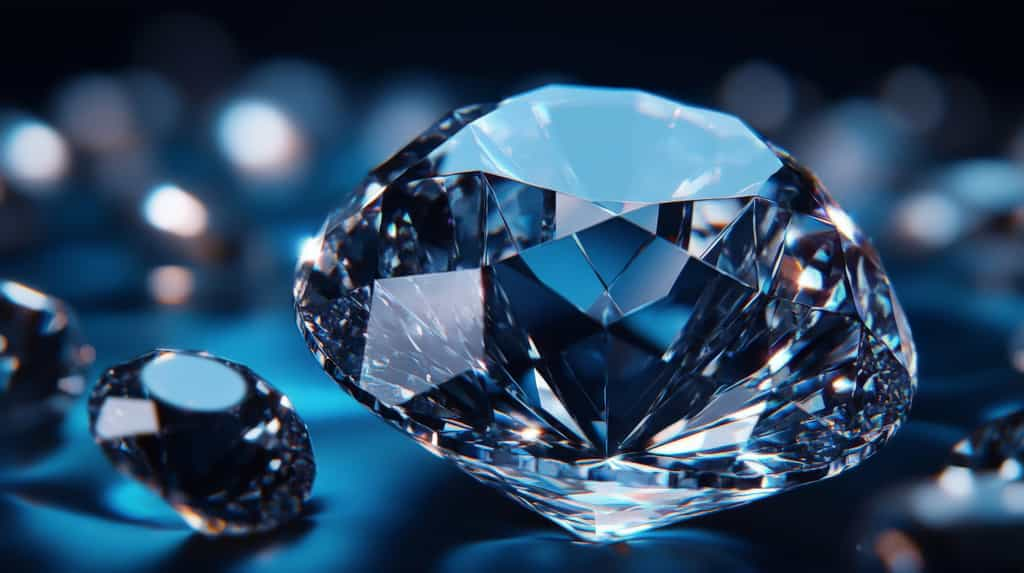
In recent years, the jewelry industry has undergone a significant transformation, largely driven by the rise of lab-grown diamonds. These diamonds, created using advanced technological processes, are rapidly gaining traction as the sustainable alternative to traditional mined diamonds. As consumers become more environmentally conscious and increasingly demand ethical products, lab-made diamonds are stepping in as the future of luxury jewelry. This article delves deep into the world of lab-grown diamonds, exploring their benefits, the technology behind their creation, and why they are set to dominate the market in the years to come.
What Are Lab-Grown Diamonds?
Lab grown diamonds are the future, also known as synthetic diamonds or man-made diamonds, are diamonds that are created in a controlled laboratory environment using cutting-edge technology. Unlike natural diamonds, which are formed over millions of years under extreme heat and pressure beneath the Earth’s surface, lab-grown diamonds are cultivated in a matter of weeks using two main methods: High Pressure High Temperature (HPHT) and Chemical Vapor Deposition (CVD).
HPHT Method
The HPHT method mimics the natural process that forms diamonds in the Earth’s mantle. By applying high pressure and high temperature to a carbon source, a diamond seed is grown into a full diamond. This process is highly efficient and produces diamonds that are chemically and structurally identical to their natural counterparts.
CVD Method
The CVD method, on the other hand, involves placing a diamond seed into a vacuum chamber filled with carbon-rich gas. The gas is ionized, causing carbon atoms to settle on the seed and gradually build up into a diamond crystal. This method is particularly favored for producing larger, high-quality diamonds.
Both methods result in diamonds that are physically, chemically, and optically identical to mined diamonds, with the only difference being their origin. Lab-grown diamonds are cut, polished, and graded in the same way as natural diamonds, making them indistinguishable to the naked eye.
Why Lab-Grown Diamonds Are the Future
As the world becomes more conscious of the impact that traditional diamond mining has on the environment and local communities, lab-grown diamonds are gaining popularity for their ethical and environmentally friendly production methods. There are several key reasons why lab-made diamonds are poised to become the future of the jewelry industry.
Sustainability: A Greener Choice
The environmental impact of diamond mining is a significant concern. Traditional diamond mining involves large-scale excavation, which often leads to deforestation, habitat destruction, and soil erosion. Additionally, mining operations consume vast amounts of energy and water, contributing to carbon emissions and water pollution.
In contrast, lab-grown diamonds have a much smaller environmental footprint. The energy used in the production of synthetic diamonds is increasingly sourced from renewable energy, further reducing their impact on the planet. Many lab-grown diamond manufacturers are committed to sustainability, ensuring that their operations adhere to strict environmental standards.
Ethical Sourcing
One of the most compelling reasons for the rise of lab-grown diamonds is their ethical nature. The diamond mining industry has been marred by human rights abuses, including child labor, unsafe working conditions, and conflict financing in some regions. Lab-grown diamonds, however, are free from these concerns. Consumers can feel confident that their diamond purchases are not contributing to exploitative practices.
Additionally, the traceability of lab-grown diamonds allows consumers to know exactly where their diamonds are coming from and how they are being made, offering peace of mind that traditional ethical concerns are eliminated.
Cost-Effectiveness
One of the most attractive aspects of lab-grown diamonds is their affordability. While natural diamonds are rare and can be prohibitively expensive due to their scarcity and the extensive mining process required to extract them, lab-grown diamonds are created in a lab and can be produced at a much lower cost. As a result, consumers can purchase high-quality diamonds at a fraction of the price of their natural counterparts.
The cost savings associated with lab-grown diamonds don’t compromise quality. In fact, many consumers are choosing to purchase larger stones or diamonds with better quality grades because of the more affordable price tags. This makes lab-grown diamonds an excellent option for those seeking luxury at a more accessible price.
Customization and Availability
Lab made diamonds offer a level of customization that is difficult to achieve with mined diamonds. Since these diamonds are created in a lab, they can be tailored to meet specific design preferences and quality requirements. Whether it’s the size, cut, color, or clarity, consumers have greater flexibility in selecting the diamond that best suits their needs.
Furthermore, lab-grown diamonds are available in an almost limitless supply, ensuring that consumers can find the perfect diamond for any occasion. Unlike traditional mined diamonds, which are limited by natural availability, lab-grown diamonds are not subject to fluctuations in supply, making them a stable and reliable choice for buyers.
Lab-Made Diamonds: A Better Choice for Consumers
Quality Assurance and Grading
One of the main selling points of lab-grown diamonds is their superior quality control. Since lab-made diamonds are created in a controlled environment, manufacturers have greater control over the growth process, resulting in diamonds that are more consistent in their appearance and quality. The grading of lab-grown diamonds follows the same standards as natural diamonds, with factors such as cut, color, clarity, and carat weight being assessed by certified gemologists.
Consumers can rest assured that lab-grown diamonds will meet or exceed their expectations in terms of sparkle and durability. Lab-made diamonds are just as hard and long-lasting as mined diamonds, with a hardness rating of 10 on the Mohs scale of hardness, making them perfect for daily wear.
Positive Consumer Sentiment
As awareness of the benefits of lab-grown diamonds grows, consumer sentiment has become overwhelmingly positive. Shoppers are increasingly seeking out ethical and sustainable alternatives to traditional luxury goods. With lab-grown diamonds offering an environmentally friendly, cost-effective, and socially responsible choice, they align with the values of today’s conscious consumers.
In fact, many celebrities and influencers have embraced lab-grown diamonds, helping to elevate their status as a fashionable and responsible choice. As the market continues to expand, lab-grown diamonds will likely become the go-to choice for a growing number of consumers seeking both luxury and conscience in their purchases.
The Future of Lab-Grown Diamonds
The future of lab-grown diamonds looks incredibly bright. As technology continues to advance, lab-made diamonds are becoming even more affordable, accessible, and high-quality. Experts predict that within the next few decades, lab-grown diamonds could account for the majority of the global diamond market. The widespread adoption of synthetic diamonds is already gaining momentum, with major jewelry retailers embracing them as a mainstream option for their customers.
Innovation in Diamond Production
The technology behind lab-grown diamonds is still evolving, with researchers working on new methods to produce diamonds more efficiently and with even higher quality. As innovation continues to shape the future of diamond creation, we can expect to see new diamond designs, improved sustainability practices, and even more affordable options for consumers.
Expanding Market Share
Lab-grown diamonds are already gaining a significant share of the diamond market, and as more consumers embrace these sustainable, ethical, and affordable alternatives, the demand for lab-grown diamonds is expected to continue growing. Retailers, manufacturers, and consumers are recognizing the numerous benefits of synthetic diamonds, and as these diamonds become more mainstream, they will become an integral part of the jewelry landscape.
Conclusion
In conclusion, lab-grown diamonds are not just a trend—they are the future of the jewelry industry. With their sustainability, ethical sourcing, cost-effectiveness, and superior quality, they offer a compelling alternative to traditional mined diamonds. As consumer demand for environmentally friendly and ethically produced goods continues to rise, lab-made diamonds will only gain in popularity. For those looking for a diamond that combines luxury, conscience, and value, lab-grown diamonds are the perfect choice for the modern consumer.



